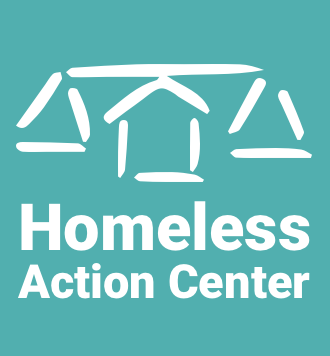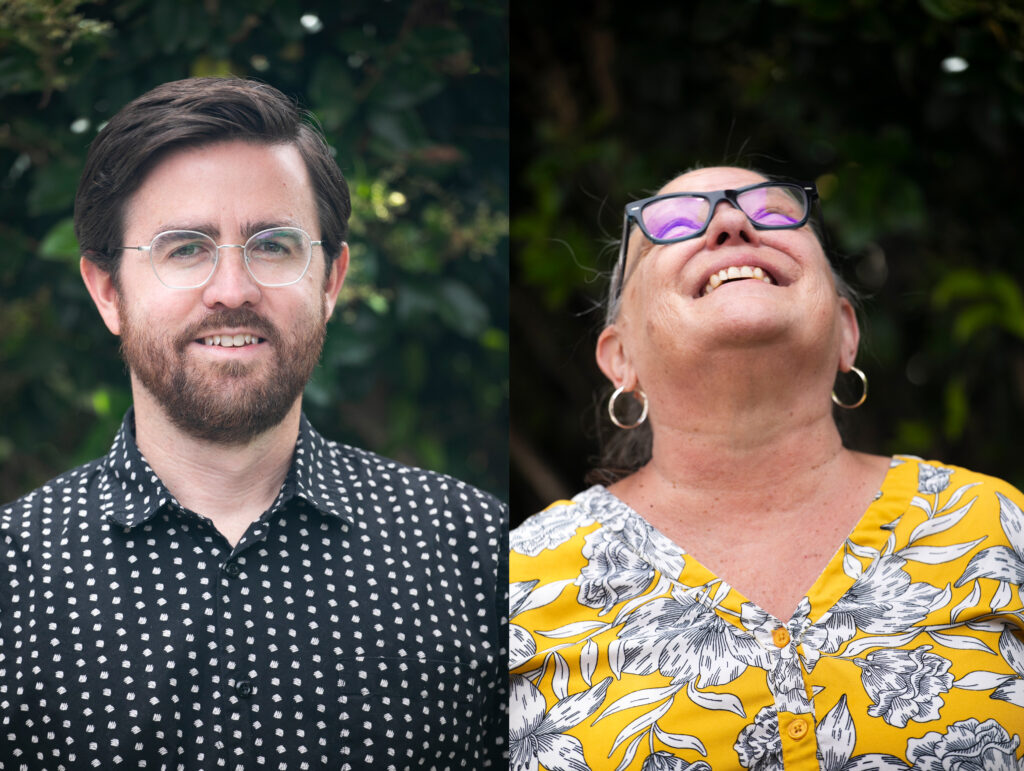Practicing Harm Reduction with Pattie Wall
By Drew Tillman, HAC Staff Attorney II, and Pattie Wall, HAC Executive Director
On one level, HAC is a legal aid agency dedicated to helping unhoused and unstably housed clients get access to public benefits and stable housing. On another level, though, the agency is a collection of interesting, creative, and thoughtful people. Below, in the first of two installments, we have the pleasure of speaking with HAC’s Executive Director, Pattie Wall, who has been at HAC for almost 30 years.
Drew: Welcome, Pattie. Thank you for joining me for the inaugural post of the as-yet-unnamed HAC blog interview series. I thought that we could start with some softball type questions before we get into the really hard stuff. Where did you grow up?
Pattie: I grew up in San Francisco in the Outer Mission.
What was your first job?
I worked at a coffee shop around the corner from my house for a summer when I was 15. My boss’s name was Dick Harrison. Of course, I had other jobs before that, but they weren’t in the formal economy – things like babysitting, mowing somebody’s lawn. I was pretty much on the hustle from about age 12, making money somewhere or another.
Did you have any other notable jobs before you decided to go to law school?
I was a travel agent and the great thing about that job is that I got to travel for free. It was a sort of hedonistic, let’s-travel-and-not-think period in my life, and it was very good for me. So, I traveled quite a lot during those years. One of my travel agent clients was Mr. T [actor Laurence Tureaud from “The A Team”]. He wase super kind and polite and patient with me – a really nice guy. And a giant.
What made you decide to go to law school?
I decided to go to law school in second grade and I never really revisited the thinking on that – although maybe I should have. Once I got to law school, I was like, “what the fuck was I thinking?” The whole experience was very alienating and foreign to me. I survived it, but those three years of being in law school were not funny at all, just totally not funny.
Do you know what second-grade Pattie was thinking when she decided to go to law school?
I think I met my dad’s lawyer. I thought he was, like, fancy and smarty pants and dressed really well. And I think he got connected in my head with Perry Mason. I got it in my head that lawyers were these sort of magical creatures who could make problems better.
What was it about law school that was so weird and unpleasant for you?
I grew up in this really working-class environment, and I found college equally alienating. And then law school is like a whole new tier of elite people. I was just stunned every goddamn day. I had a classmate whose mom came and picked her up in a limo for fashion shows at lunchtime.
What was your first job that you took out of law school?
When I was in law school, I worked at the California State Bar on the ethics hotline. Then at some point, I got a job in the State Bar’s Trial Counsel’s office. That was the unit of people who disciplined bad attorneys. I worked there for some time. And then I left that job and moved to Africa in 1990.
What were you doing in Africa?
My then-partner was an academic, and they were doing their field study there. So, I moved to Zanzibar, which is a tiny island off the coast of East Africa. It’s part of Tanzania. And I lived between there and Kenya for about six months and had my first sort of up close and personal understanding of colonialism.
Zanzibar is a very Muslim place and a lot of the people who live there identify more as Arab than African. So, even though to a goofy white chick from San Francisco they looked like Black people, their identities were far more complex because of colonialism. It was common for people on Zanzibar to have connections with people in Oman and other parts of the Middle East.
The food was highly influenced by both Arabic and Indian cooking. There was an Indian population there on Zanzibar, and those people had mostly migrated from Goa and India. They were sort of the merchant class there – the shopkeepers, restaurateurs, hotel owners. I got a volunteer job working for Finita, which is a Finnish aid organization.
This was post-structural reform, and they were working to return the land to the indigenous people because they had nationalized it after the revolution. People got an apartment in the city and a plot in the country. So, I worked on some of that stuff and mostly I walked around like a dope just going like, “oh my God.” Like, I thought law school blew my mind but that shit totally blew all of my conceptions about everything.
Then I came back and I got a job working at a firm in the South Bay. They did legal services for the working poor. So, people who were in the unions, for example, would have this legal benefit in their union contract that would allow them to consult with an attorney about anything. So, I worked on those cases. One New Year’s Eve, both of the named partners in the firm went to rehab on the same day. It was the ‘90s. People were still doing cocaine.
Finding the Way to HAC
When did you find your way to HAC?
Around 1995. HAC began in 1990 as a project at the East Bay Community Law Center (EBCLC) but by the time I started it had spun off and was its own 501(c)(3).
What kind of work was HAC doing at that point?
It was mostly public benefits advocacy – primarily SSI plus some General Assistance and food stamps, as well as medical advocacy as needed. We had a big contract with the state parole office. And after I had been here for a few months, that contract got canceled because HAC couldn’t come to agreement with parole about whether attorney-client privilege applied. Basically, parole wanted us to tell them the location of every client, every minute of every day. So that didn’t work out. But we just kept getting different contracts and sort of growing the practice. Eventually we got a big increase in funding in 2013 that allowed us to hire a bunch more people. And now we’re huge.
One of the defining characteristics of HAC is this philosophy of harm reduction and very low barriers. Was that something that was part of HAC from the beginning or is it something that has evolved over time?
I think we have a name for it now but we were doing it before we knew what to call it. We used to call it a variety of things – “by any means necessary” and “whatever it takes”. Those were sort of the precursor names before we adopted the harm reduction moniker. I had certainly experienced harm reduction work before I came to work at HAC.
One of the unpaid gigs that I had before I came to HAC is that I worked for an organization in San Francisco that helped mostly gay and trans Black men in the Tenderloin who needed to get on SSI because of HIV. That’s where I first learned how to do SSI – to the extent that I know how to do it now. That organization was definitely practicing harm reduction. It was really community-conceived and driven. I was the only lawyer volunteering there at the time. It was mostly just regular people who taught themselves how to do this really necessary thing.
What I like to say is that we’re reducing the harms created by capitalism. The historical shutting out of a whole underclass of people who can’t survive in the capitalist economy.
The year after I started working at HAC, in 1996, the Republican congress passed the whole welfare reform business and Clinton signed it into law. And they started cutting people off SSI because they were addicts. Before that we could get somebody on SSI who had failed at rehab two or three times. There was a provision in Social Security law that said that if you were hopelessly addicted, you could get on benefits. We would submit evidence that somebody had been to several treatment programs and that it hadn’t made a difference.
Now our practice is completely different. Now we need to prove that whether people are drinking and using is not necessarily always relevant to their level of functioning. I think we became more harm reduction when that became our mission – we have to show that people can drink and use drugs and still have a disability.
How would you explain the concept of harm reduction to someone that’s never encountered the term and doesn’t have any background in this type of work?
What I like to say is that we’re reducing the harms created by capitalism, right? The historical shutting out of a whole underclass of people who can’t survive in the capitalist economy. Social Security work is all about “can you work?” And so, to the extent that we can make it easier for people with disabilities not to have to participate in that system, that reduces the harms associated with that system.
[Part 2 of this interview will be published in May 2024.]

